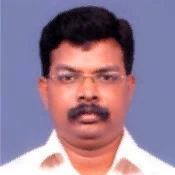
J Sasi Kiran
Work place: CSE Dept, MNR College of Engg. & Tech, Sangareddy, MedakDt, A.P., India
E-mail: sasikiranjangala@gmail.com
Website:
Research Interests: Image Processing, Image Manipulation, Image Compression
Biography
Sasi Kiran Graduated in B.Tech from JNTU in 2002. He received Masters Degree in M.Tech. fromBharath University, Chennai, in 2005 and pursuing Ph.D from University of Mysore, Mysore in CSE under the guidance of Dr. V. Vijaya Kumar. At present he is pursuing his research at Centre for Advanced Computational Research (CACR) of Anurag Group of Institutions (AGOI), Hyderabad. He served as an Associate Professor in VidyaVikas Institute of Technology, Hyderabad from 2004 to 2013 and working as Associate Professor in CSE Dept. in MNR College of Engg. & Tech, Sangareddy, MedakDt, A.P, India. His research interests include Image Processing. He has published research papers in various National, International conferences, proceedings and Journals. He is a life member of IE, ISTE, ISC, IAE and management committee member of CSI. He has received significant contribution award from CSI India in 2012.
Author Articles
Facial Expression Recognition Based on Features Derived From the Distinct LBP and GLCM
By Gorti Satyanarayana Murty J Sasi Kiran V.Vijayakumar
DOI: https://doi.org/10.5815/ijigsp.2014.02.08, Pub. Date: 8 Jan. 2014
Automatic recognition of facial expressions can be an important component of natural human-machine interfaces; it may also be used in behavioural science and in clinical practice. Although humans recognise facial expressions virtually without effort or delay, reliable expression recognition by machine is still a challenge. This paper, presents recognition of facial expression by integrating the features derived from Grey Level Co-occurrence Matrix (GLCM) with a new structural approach derived from distinct LBP’s (DLBP) ona 3 x 3 First order Compressed Image (FCI). The proposed method precisely recognizes the 7 categories of expressions i.e.: neutral, happiness, sadness, surprise, anger, disgust and fear. The proposed method contains three phases. In the first phase each 5 x 5 sub image is compressed into a 3 x 3 sub image. The second phase derives two distinct LBP’s (DLBP) using the Triangular patterns between the upper and lower parts of the 3 x 3 sub image. In the third phase GLCM is constructed based on the DLBP’s and feature parameters are evaluated for precise facial expression recognition. The derived DLBP is effective because it integrated with GLCM and provides better classification performance. The proposed method overcomes the disadvantages of statistical and formal LBP methods in estimating the facial expressions. The experimental results demonstrate the effectiveness of the proposed method on facial expression recognition.
[...] Read more.Other Articles
Subscribe to receive issue release notifications and newsletters from MECS Press journals